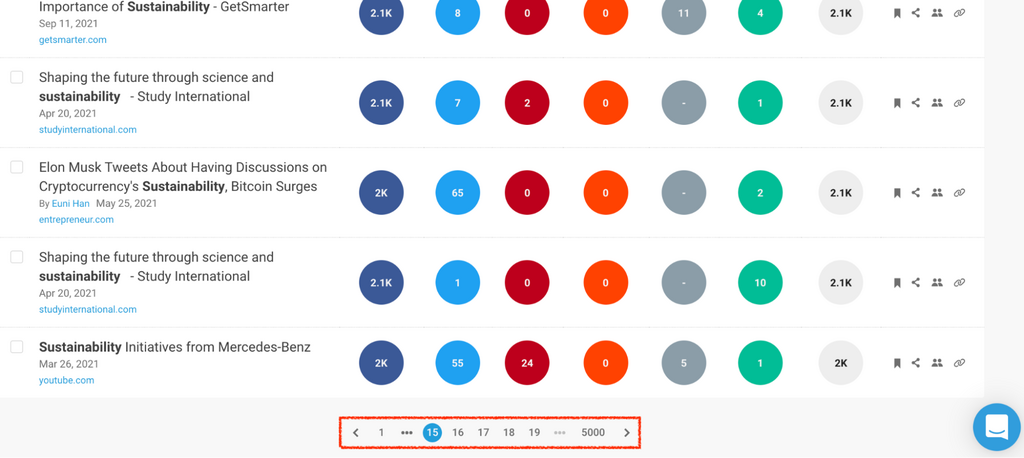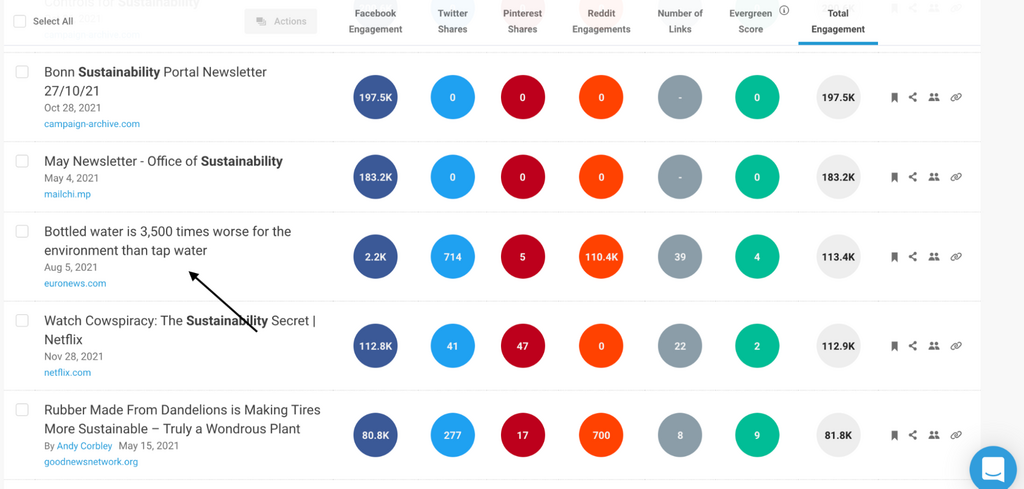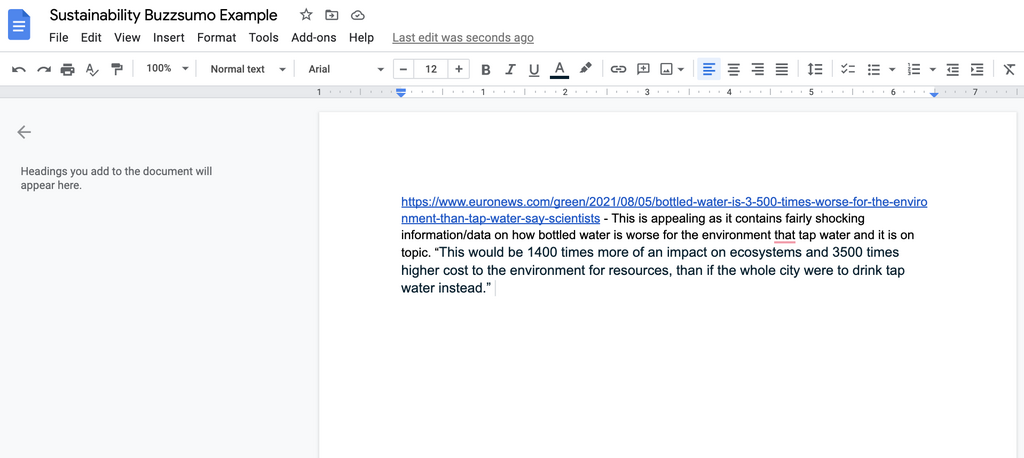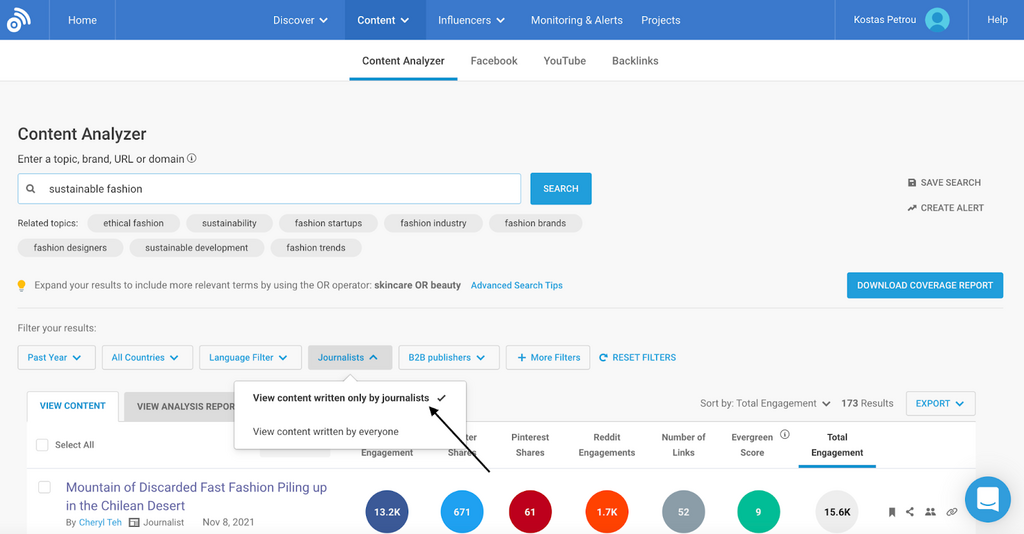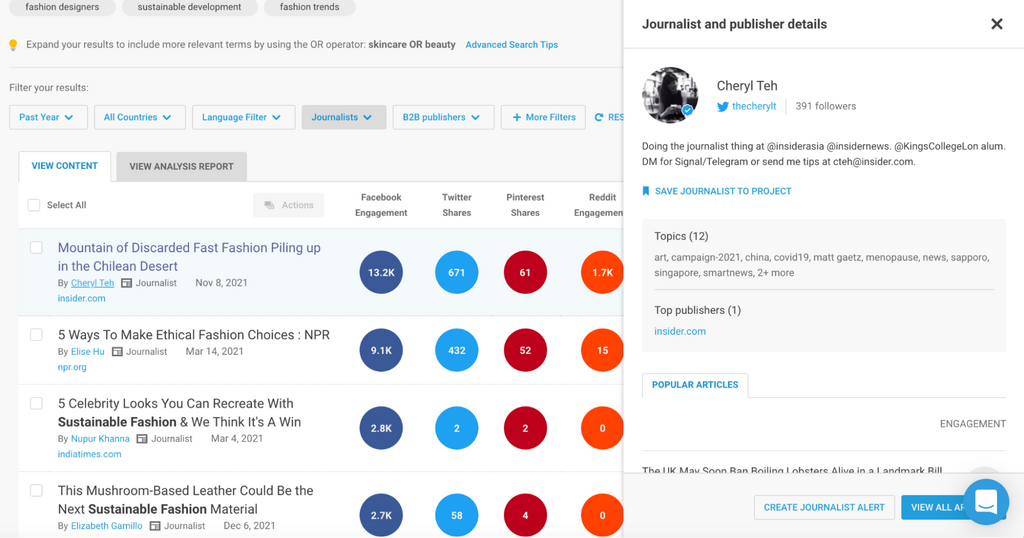Published February 14th 2022
How To Land Top Tier Media Coverage In 13 Simple Steps
Whenever I speak to people outside of the industry about how we come up with ideas for campaigns, very often the answers I hear are a little off the mark.
Some of the answers I have heard are, “you go for a walk and think about the subject until something springs to mind” or, “I heard somewhere taking a shower helps the creative mind come to life”
The truth is, very rarely will a light bulb moment just spring into existence, but don’t worry, there is a solution.
There's a process to coming up with great ideas.
I’ll share one of the main ways that we at Story And Search come up with ideas to generate top tier media coverage in some of the largest publications in the world, such as the BBC, Daily Mail, Forbes, The Guardian, The Sun and many more.
Grab a drink of your choice, have BuzzSumo open and ready, and follow with me.
Watch and read the Story & Search case study.
The step-by-step guide to generating media coverage
1. Decide on a topic to research
Find topics that are relevant to the product/service you offer and the solution it solves. For this example, we will use “Sustainability” as it is a hot topic in the media right now.
2. Search your main topic and relevant topics in BuzzSumo
Using BuzzSumo, head to the Content Analyzer and enter the topic/topics into the search bar. We search each topic one by one, so for this stage, just enter one topic into the search bar.
Notice how BuzzSumo gives suggestions based on the topic you enter.
I recommend you also search for these recommendations in the search bar, as they'll be related to what you are looking for, and very often deliver even better search results.
3. Validate whether your topic has enduring engagement
Jump to pages 15 to 20 of the Content Analyzer...
If engagement is still at 50 or more, go back to page 1. You’ve found an engaging press coverage idea!
If not, your topic may not be broad enough, or journalists may not be writing about that topic, so it could be time to move on.
Or it could be that the topic isn't the issue, but the search phrase you are using is. Play around with that a bit before making a decision.
4. Read through the most engaging headlines for inspiration
Let's assume your topic passed the test mentioned in step 3, as it did in the above example.
This stage is where we start to get our creative mind in action.
We want to go through each page, and pick out content that we find most interesting around this given topic.
The key here is to actually click and read the articles which appeal to you.
You don’t have to read the whole article, just skim read it and decide whether it’s interesting.
If you find it interesting, then it’s worth saving.
I personally found this story interesting, so I opened the URL by clicking on the headline.
I had a 30-second read, and decided it was worth keeping.
At this stage, I will copy and paste the article URLs into a google doc, and write a one-liner per article, just mentioning why I found it interesting.
I will also at times copy and paste some content from the article that caught my attention.
5. List out engaging subtopic ideas from the top headlines
After you’ve scanned through 15 to 20 pages on BuzzSumo, and copied + pasted a load of articles, go through each one and give them a subtopic name.
In the example below, I have broken the main topic down into three subtopics:
- Plastics in sustainability
- Innovation in sustainability
- Greenwashing in sustainability
However, you are going to want around 10 to 15 subtopics to work with, so keep going.
This is possible with broader main topics.
Sustainability is huge so we can get 10 fairly comfortably, but if you have a smaller main topic then aim for five to seven subtopics to work with.
6. Mind-map as many media coverage ideas as you can think of
Now let's say you have around 10 to 15 topics. It's time to start ideating. I do this in a few ways. You may choose another way, but this is what works for me.
Set yourself a timer for each topic, and push yourself to come up with as many ideas as possible.
The key here: Don't allow yourself time to talk yourself out of an idea, no matter how crazy it sounds at this stage.
By timing yourself you are switching off the part of your brain that logically tries to weed out silly or ridiculous ideas.
Right now we want them all!
I choose to open a new blank google doc and type the ideas out, simply because I type quicker than I write.
7. Select 5 - 8 strong media coverage ideas
You want to end up with around 80+ loose ideas.
Sometimes these are just questions.
Around 90% of these ideas will not be very good, and that's fine.
We only want five to eight good ones that we can validate further.
Remember, we need to go through the pain of the other 75 bad ideas to get to the five strong ideas.
8. Validate your media coverage ideas with more data
Now let's say we have five strong ideas. It’s time to validate them.
We need to do a quick feasibility check.
If the ideas are reliant on data, for example, we need to start searching for the data required, or get a data specialist to find out if the data is there, and to structure it into a format that works for the story.
I tend to do desk research and reflection at this stage:
- Is the data available or is there similar data available?
- Do the ideas drive an emotional response?
Pro Tip
Use the Content Analyzer to research audience emotions
See whether your media coverage idea drives an emotional response in the Content Analyzer report tab. Just enter your topic, and view the breakdown of Facebook Reactions.
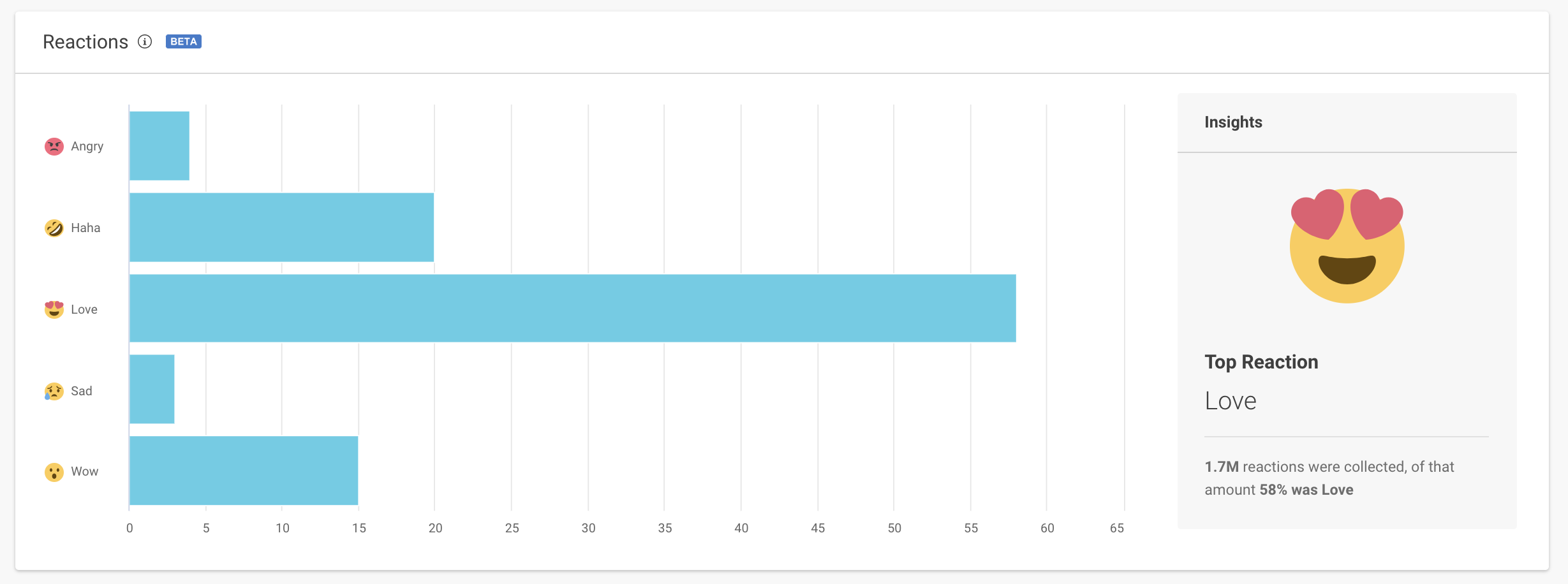
- Is the idea on brief? (sometimes you can veer off into a whole new direction without realizing it)
- Will journalists cover it? (We can check this using the Content Analyzer, and filter the results to just journalists)
BuzzSumo recently studied 600K journalists, to understand how to create a PR pitch once and for all. Read it, and discover more ways of finding journalists and building better PR-journo relationships.
- Can your idea be made? (sometimes our ideas involve interactive assets like this one we created for one of our clients on fashion responsibility)
Pro Tip
Test your ideas on Reddit to see if there's any appetite!
9. Score your ideas out of 10
Score your ideas based on:
- Your interest level
- The success you think it could achieve
- How hard it will be to make.
Do this by scoring each of the checks from number 8 in this list, out of 10.
10. Share your top 3 ideas with colleagues
Using your scoring system in step 9, pick two to three ideas and get feedback from colleagues and peers.
After you receive feedback, refine the idea where you feel necessary.
11. Present your ideas to the rest of your team
You are now ready to put your ideas into a presentation and present them.
Once you get your approval, and have agreed on what idea you are going to run with, get making the campaign.
Pro Tip
Create a swipe file of all your favorite campaigns
I do this on Pinterest. When I see a campaign that I really like, I will pin it to my “campaigns” pinterest board.
Nobody else sees the board as I set it to private.
I also spend some time every week actively seeking out inspirational campaigns to add them to my Pinterest board.
When I am looking for some additional ideation inspiration, I always visit my pinterest board to get the creative part of my mind in gear.
12. Find the right journalists to outreach to
Let’s say you have made the campaign, refined it, and have a press release ready.
Now we need to know which journalists to send our press release to.
People use many tools to find the right journalists.
Here are four of my favorite ways:
1. Whilst I am doing my initial research on BuzzSumo, I will find out who wrote the articles I was interested in, using the Journalist Profiles feature.
Simply click on the name of the journalist, as can be seen in the image below, and the information bar on the right will appear.
You can save the journalist to a project, which allows you to make a list of journalists very easily.
2. Search Google’s news section by using the main keywords from your campaign.
For example, if I am interested in the Forbes article, and Forbes would be a target publication that I would like to get coverage in, I will open up this link and look to see what journalist wrote this story.
3. I will search the subcategory sections of my target publications website.
I do this mainly by heading to Google and searching for the publication name and topic.
For example, this google search was “Vogue Sustainability”
4. I also use a journalist database tool to search for journalists who are writing on my campaign topic.
These tools provide the email addresses of these journalists, which is vital for me to distribute my press release.
There are a few of these media database tools such as Cision.
13. Send your campaign to your journalist list
You have your campaign, you have your lists of journalists, you are now ready to push send and start generating top tier media coverage that you never thought was possible.
The below image is some of the coverage we received for a client based on the above process.
Following the above steps will put you in a great position to start generating top tier media coverage, but also, in time, you will find yourself adjusting these steps and adding in things that work best for you.
You will form your own way of doing things, but this is a great foundation to build on.
As a final tip, I really recommend following people in the industry who are putting out amazing campaigns that are generating results.
I created my own swipe file on Pinterest which is something I recommend every creative does.
Not only will it help kick your creative juices into gear, but it will oftentimes inspire ideas for campaigns.
If anyone wants any tips on how to do this, or any tips in general regarding landing top tier media coverage, feel free to get in touch with me via LinkedIn or Twitter.
Categories
Digital PRCategories
Digital PRThe Monthly Buzz⚡
Subscribe to BuzzSumo's monthly newsletter to:
Stay up-to-date with the best of the best in content marketing 📝
Get data-informed content, tips and tidbits insights first 👩🏻💻
Read top shared content by top marketing geeks 🤓
Try
Enter any topic, term or url to search to see BuzzSumo in action. It’s free!
100% free. No credit card required.

